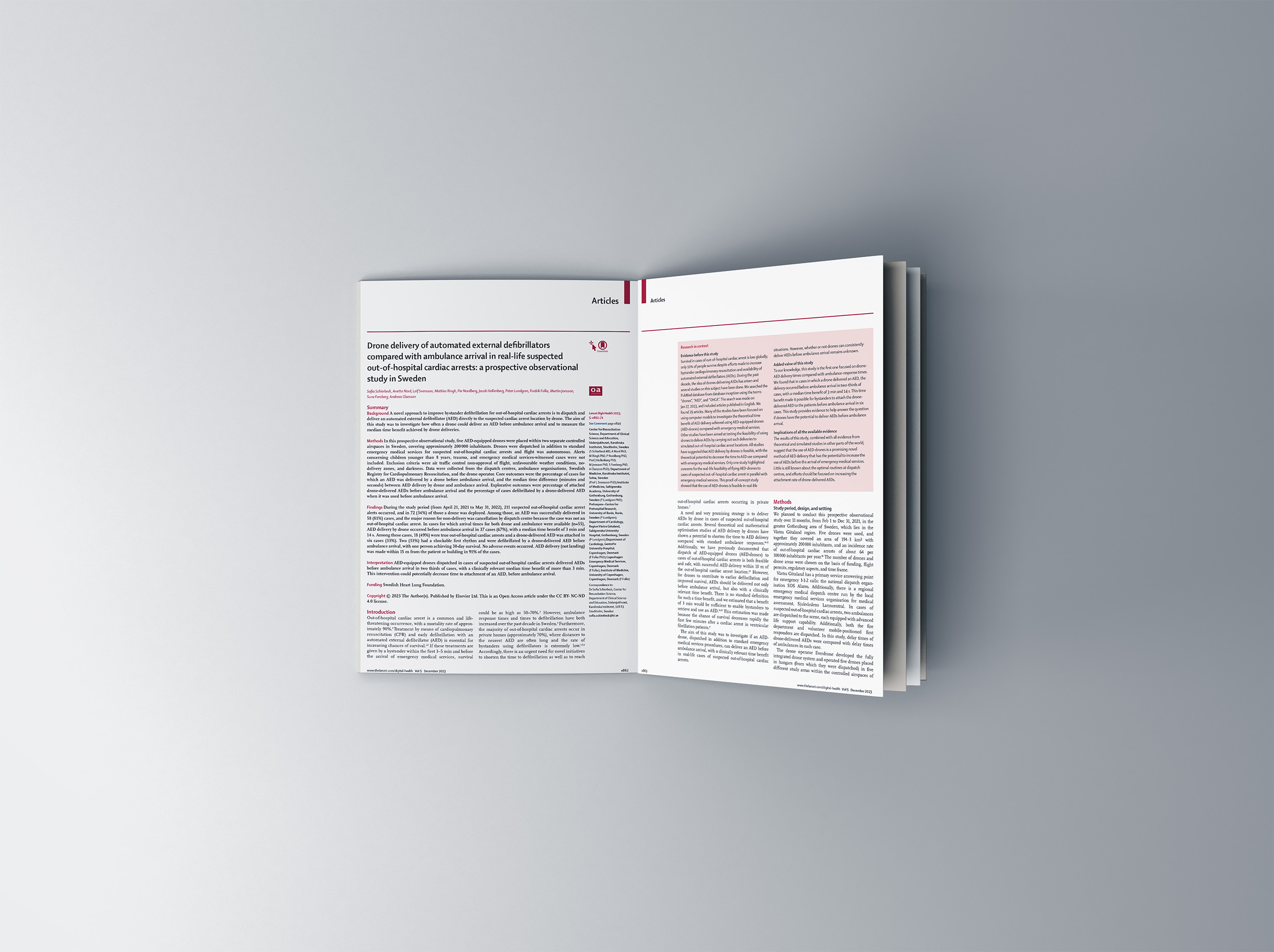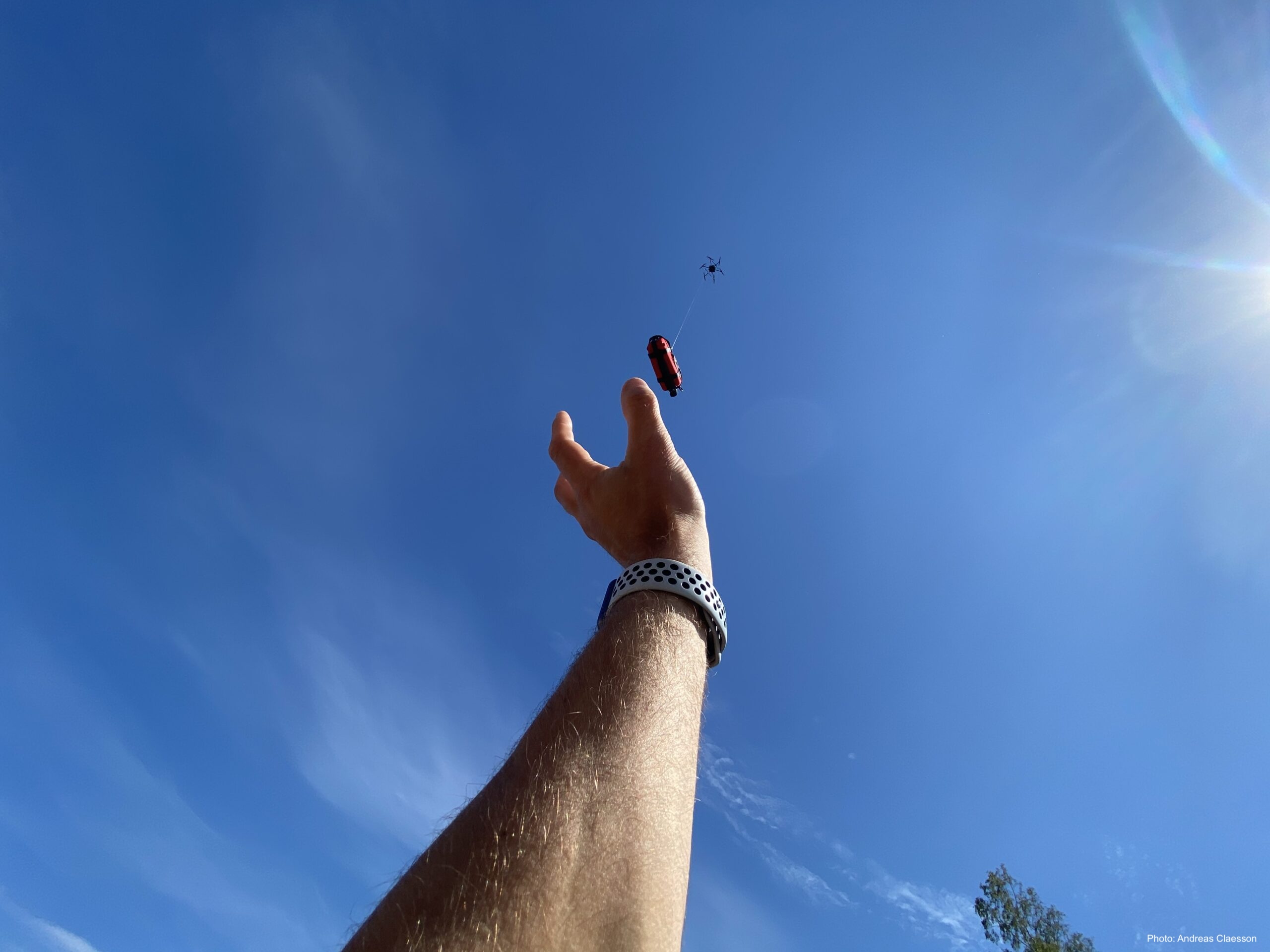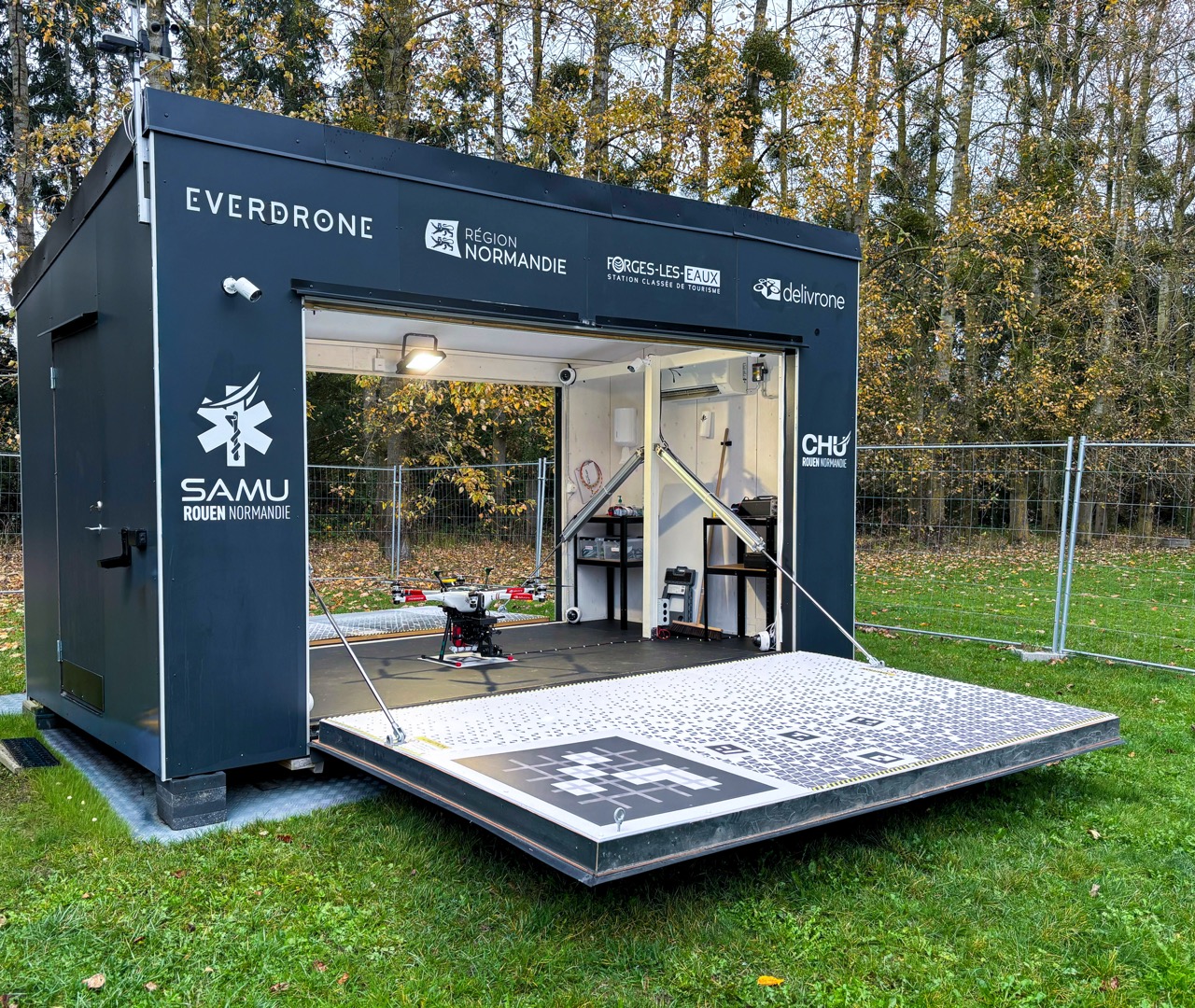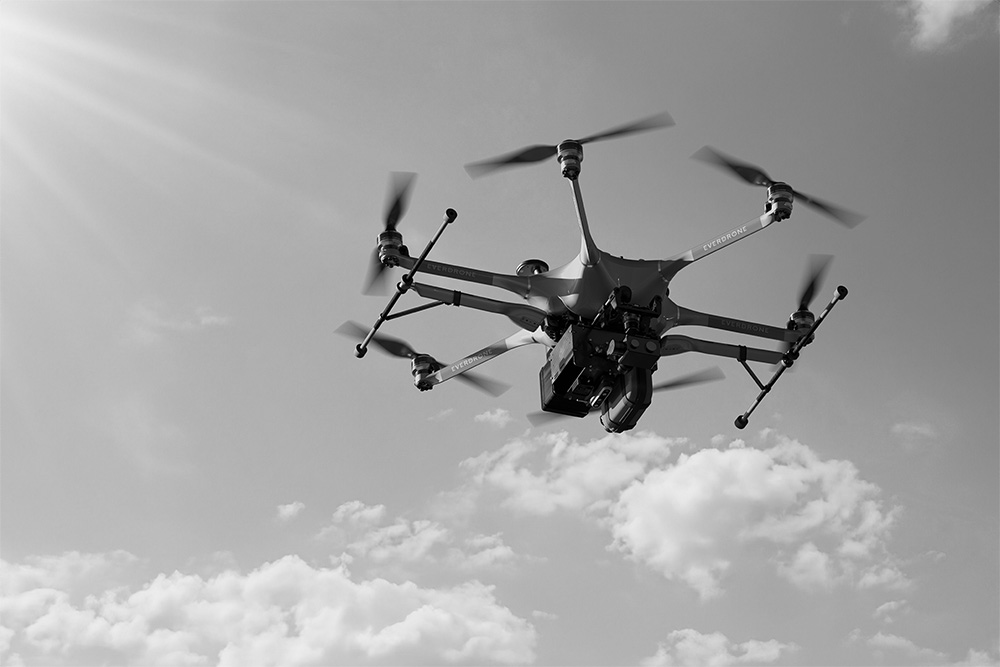Everdrone First on Scene validated by study in Lancet Digital Health
Press release 23.11.2023

“This study closes the door on any remaining questions regarding the system’s feasibility. As it was conducted over a longer period of time and recreated the same data – even improving results over time – we can confidently state that it delivers on what’s promised, that it is a well-functioning transport solution”, says Andreas Claesson.
Read more in The Lancet Digital Health here:
https://www.thelancet.com/journals/landig/article/PIIS2589-7500(23)00161-9/fulltext
“Clear-cut results and data that proves the system’s logistic viability”. That’s the key takeaway from a study recently published in Lancet Digital Health. The study has been conducted on Everdrone’s operation in Region Västra Götaland, in close collaboration between Everdrone’s innovation team and researchers from The Center for Resuscitation Science at Karolinska Institutet, Sweden.
Over a period of eleven months, Everdrone’s innovation team and researchers from The Center for Resuscitation Science at Karolinska Institutet, Sweden, have been assessing the logistic viability of Everdrone’s First on Scene system in Region Västra Götaland. Their findings are presented in an article in Lancet Digital Health, the number one digital health publication, with a global reach.
During the period April 21, 2021, to May 31 2022, the researcher group, led by Andreas Claesson, associate professor of emergency medicine, have collected data from 58 defibrillator (AED) deliveries. On December 9th, 2021, thanks to the successful delivery of an AED, lifesaving measures through defibrillation could be initiated on a 71-year-old man suffering an OHCA in Trollhättan, Sweden. After initial treatment on site, the patient was rushed to the hospital where he fully recovered.
“The data has been collected during a longer period, from a great number of incident reports, in a complex environment. All the while ‘competing’ against ambulance-based first responders”, explains Andreas Claesson. “The findings from the collected data are conclusive – two times out of three, 67% of the times, the drone arrived in good time before the ambulance.”

Photo by Andreas Claesson
Saving on critical time
The median time benefit when the drone was first on scene was 3 minutes and 14 seconds, from dispatch to arrival, but the maximum difference was 8 minutes.
“When considering that for every minute saved in getting assistance and a defibrillator to a person experiencing heart failure, the chance of survival increases by 10% – the time saving is really significant”, says Andreas Claesson.
“Time-sensitivity is a constant factor that influences everything we do”, says Daniel Blecher, Head of Customer Operations at Everdrone. “Presently, our unofficial record number is 87 seconds from takeoff to delivery.”
The study has taken several factors into account, such as day/night differences, different environments and different weather, but still the findings validate the viability. Everdrone’s First on Scene results in a clinically relevant median time benefit of over three minutes.
A fast and stable system
“This study closes the door on any remaining questions regarding the system’s feasibility. As it was conducted over a longer period of time and recreated the same data – even improving results over time – we can confidently state that it delivers on what’s promised, that it is a well-functioning transport solution”, says Andreas Claesson.
“Going forward, this article will help highlight the potential of drone deliveries of medical equipment, as well as making it clear for readers that the logistics part of drone deliveries is a moot point, it’s well-functioning and the time to question it is over”, says Daniel Blecher. “What we’re looking at now is to keep on shaving off time. Our engineers are continuously optimizing the process, and we’re always committed to minimizing response times. Excitingly, our next generation of drones, set to launch shortly, is poised to cut an additional 30% from our already exceptional response time. As the future of emergency response soars to new heights, Everdrone is undeniably at the helm of this transformative journey.”
View the full article in the The Lancet Digital Health here!
The Lancet digital health comment on using AED drones and their role in emergency response.
Press material
Still images
https://www.dropbox.com/sh/4d851xu1hdhg1qp/AABGY1uoMMqxZnIwIbV30uhUa?dl=0
Edited video (ready for publishing)
https://www.dropbox.com/sh/cgpbe4vrf91lpkv/AAAEDakKqxY9esnDLFhLGdl4a?dl=0
YouTube: The future of emergency response
https://www.youtube.com/watch?v=C1JDlpW8qMQ
Raw material (for editing)
https://www.dropbox.com/sh/msqr69ynxrfitww/AAB-WczggjqLvTo1R-TZiplma?dl=0
For more information, please contact:
Everdrone Media Relations
press@everdrone.com



